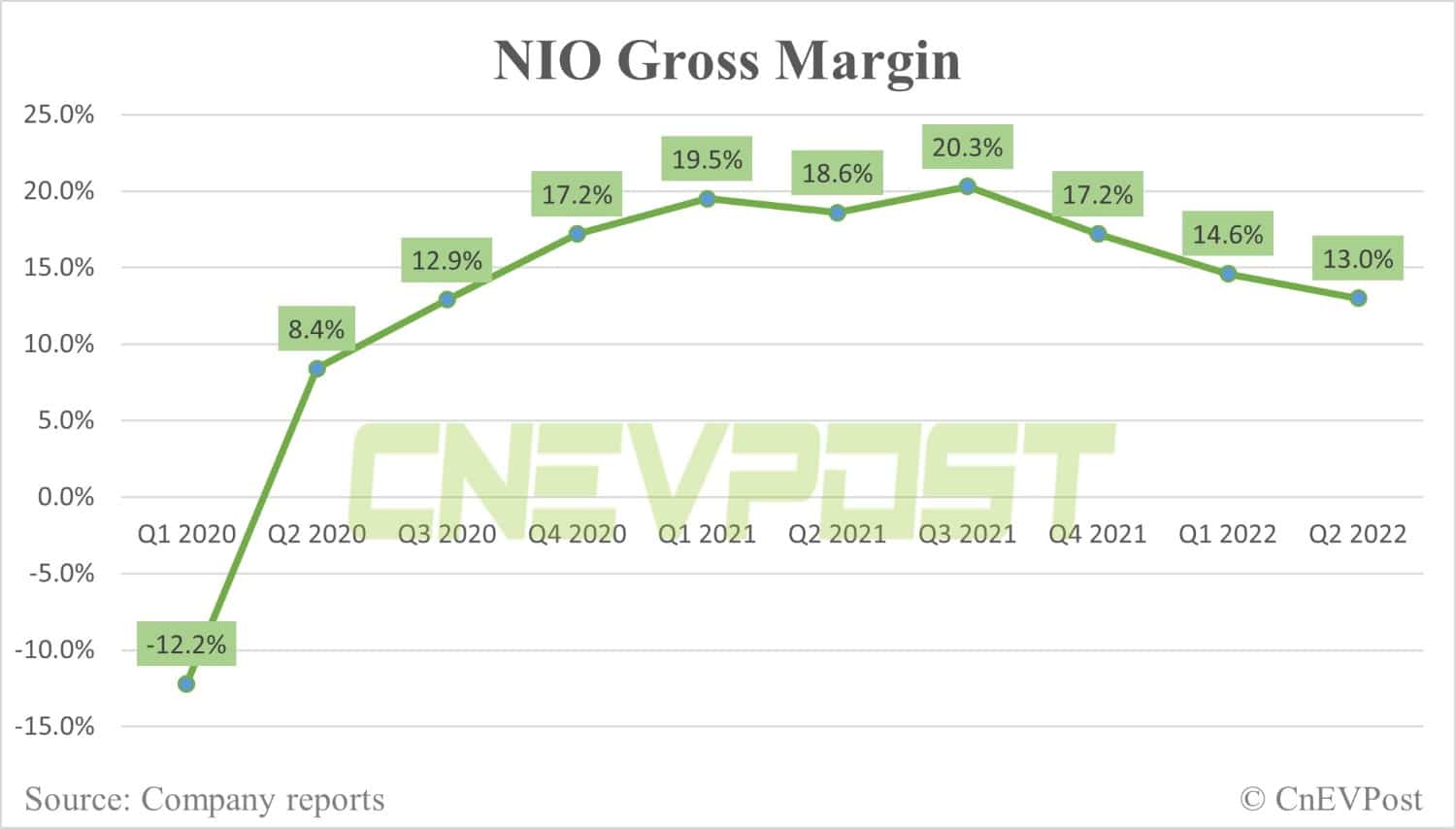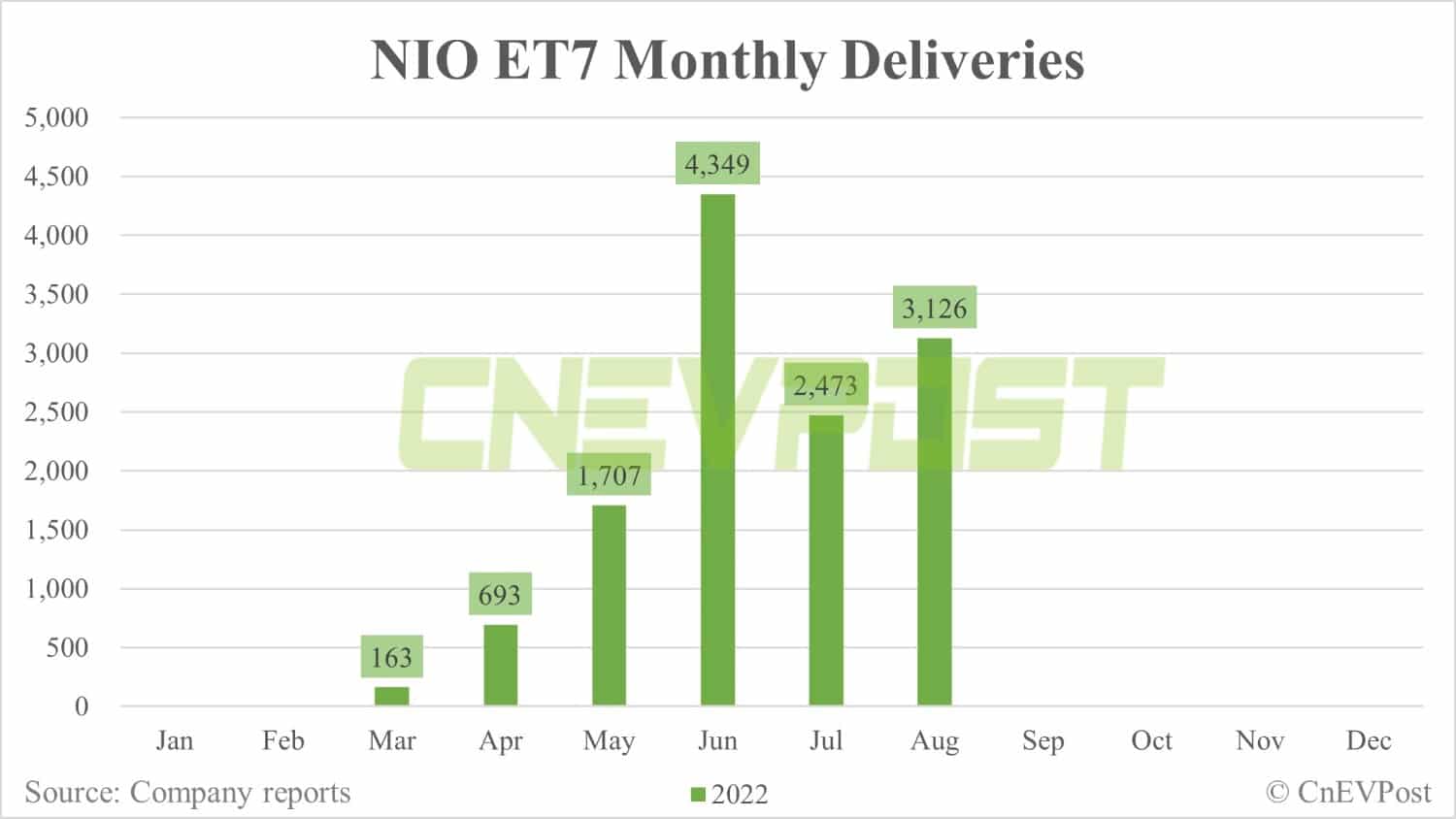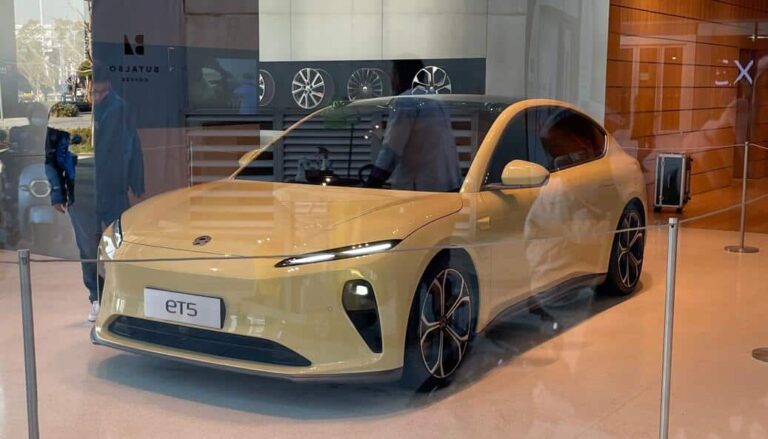Nio's NT 2.0 platform-based SUV ES7 started deliveries in August, while orders following the previous price hike started deliveries in the third quarter.
Nio's gross margin in the second quarter fell to a new low since the third quarter of 2020 due to higher battery costs. But in analysts' view, this is expected to improve in the third quarter.
Nio's gross margin is expected to recover somewhat in the third quarter, given that deliveries of its NT 2.0 platform-based SUV, the ES7, began in August and orders following the previous price hike began in the third quarter, Soochow Securities analyst Huang Xili's team said in a research note published Monday.
The company's gross margin was 13.0 percent in the second quarter, down 5.63 percentage points from a year ago and 1.6 percentage points from the first quarter, the team noted.
Nio ET7 contributed a higher percentage to deliveries, but higher battery costs contributed to the result, the team said.
Nio reported earnings on September 7 that it posted revenue of RMB 10.29 billion ($1.5 billion) in the second quarter, above market expectations of RMB 9.8 billion.
Its gross margin in the second quarter was 13 percent, down from 14.6 percent in the first quarter and a new low since the third quarter of 2020.
The company delivered 25,059 vehicles in the second quarter, with the higher-priced ET7 flagship sedan, which began delivery on March 28, contributing 6,749 units in the second quarter.
In addition to the ET7, Nio began deliveries of the new SUV ES7 on August 28 and will begin deliveries of the new sedan ET5 on September 30.
"On a full-year basis, ET5 will start delivery at the end of September, and we expect ET5 to contribute a relatively large incremental sales volume," the team at Soochow Securities said.
The team expects Nio's revenue to be RMB 57.3 billion, RMB 89.6 billion and RMB 144.2 billion from 2022-2024, with year-on-year growth rates of 58.44 percent, 56.56 percent and 60.88 percent, respectively.
They expect Nio's net loss attributable to common shareholders to be RMB 7.33 billion, RMB 5.314 billion, and RMB 2.418 billion, respectively, for the period.
It is worth noting that Nio's management had said in the fourth-quarter 2021 earnings call in late March that the company aims to break even in the fourth quarter of 2023 and achieve annual profitability for the first time in 2024.



